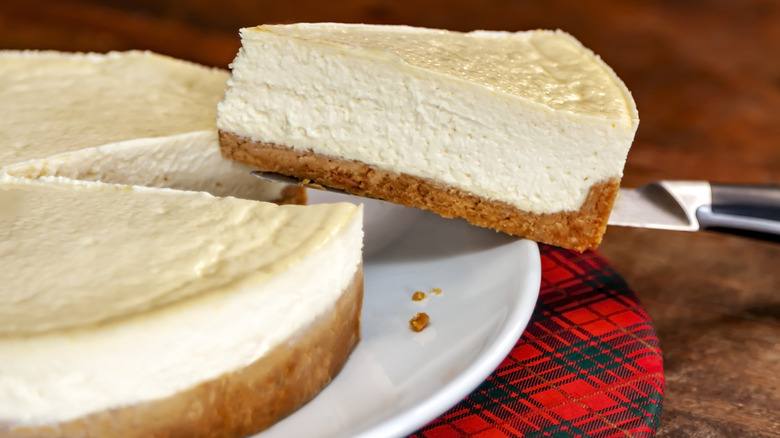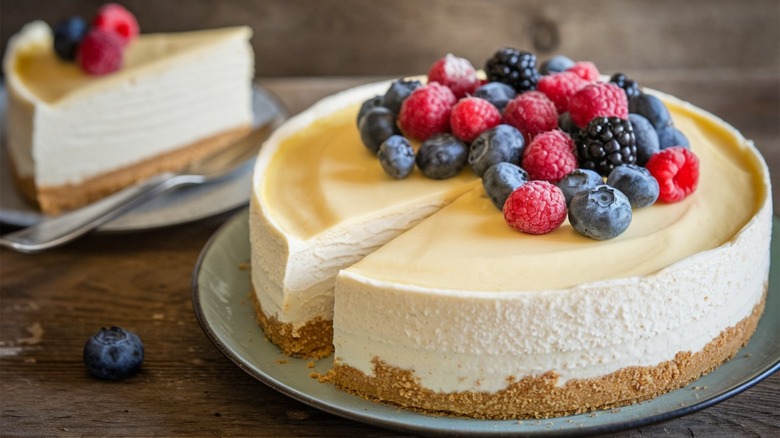Prevent Cracks In Your Cheesecake With This Simple Cooling Trick
POV: You're making a classic, oven-baked cheesecake. You did everything right, from letting your ingredients come to room temperature to baking your cheesecake in a water bath to keep it moist. Despite all this, disaster still strikes, and your cheesecake cracks. While a cracked cheesecake often tastes just as good as a smooth one, this occurrence is still incredibly frustrating, especially if you were planning on sharing the fruits of your labor with guests.
While you could cover your cheesecake with some ganache to hide those pesky fissures, there's a very simple way to keep it from splitting in the first place: Leave it in the oven. Like most other baked goods, cheesecakes expand as they heat and shrink as they cool. Cracks most often form when your cheesecake cools too quickly, due to the abrupt change in temperature between the inside of your oven and the counter.
Leaving your cheesecake in the oven after it's done baking allows it to cool much more slowly, so the batter can relax and shrink at a more measured pace. Of course, you don't want to overbake your cheesecake (which can also cause cracking), so the key here is to crack open your oven door several inches after you turn it off. This allows the heat to escape slowly, preventing your cheesecake from reacting to the shock of an influx of cold air. Once your oven has reached room temperature, it should be safe to remove your cheesecake.
Troubleshooting cheesecake cracks and fissures
When it comes to baking a velvety, tangy cheesecake with a perfectly smooth top, a water bath can do double-duty. Not only does it help keep the cheesecake moist, as mentioned, but it provides additional insulation to help it cool even more slowly. The additional moisture helps keep the cheesecake from seizing, which also helps prevent fissures. However, if your cheesecake still cracks despite these precautions, the problem may lie elsewhere.
For instance, an overmixed cheesecake will almost always crack. This happens because stirring whips air into the batter. Too much air means your cheesecake will rapidly expand and then collapse in the oven. Not only does this cause the top to split, but it also makes for a cheesecake that's dense and flat, rather than light and airy. To prevent this, make sure your ingredients are room temperature and that your cream cheese is nice and soft, so everything blends together easily.
If you forget these guidelines and your cheesecake splits anyway, don't worry; you can still present a gorgeous dessert. As mentioned before, you can disguise small, shallow cracks with a rich chocolate ganache, or white chocolate mirror glaze. For larger fissures, break out the whipped cream and style it into a fluffy swirl dusted with graham cracker crumbs. Another quick fix involves macerating berries with a little sugar or honey and spooning them onto the cheesecake as a glossy and delicious decoration.

